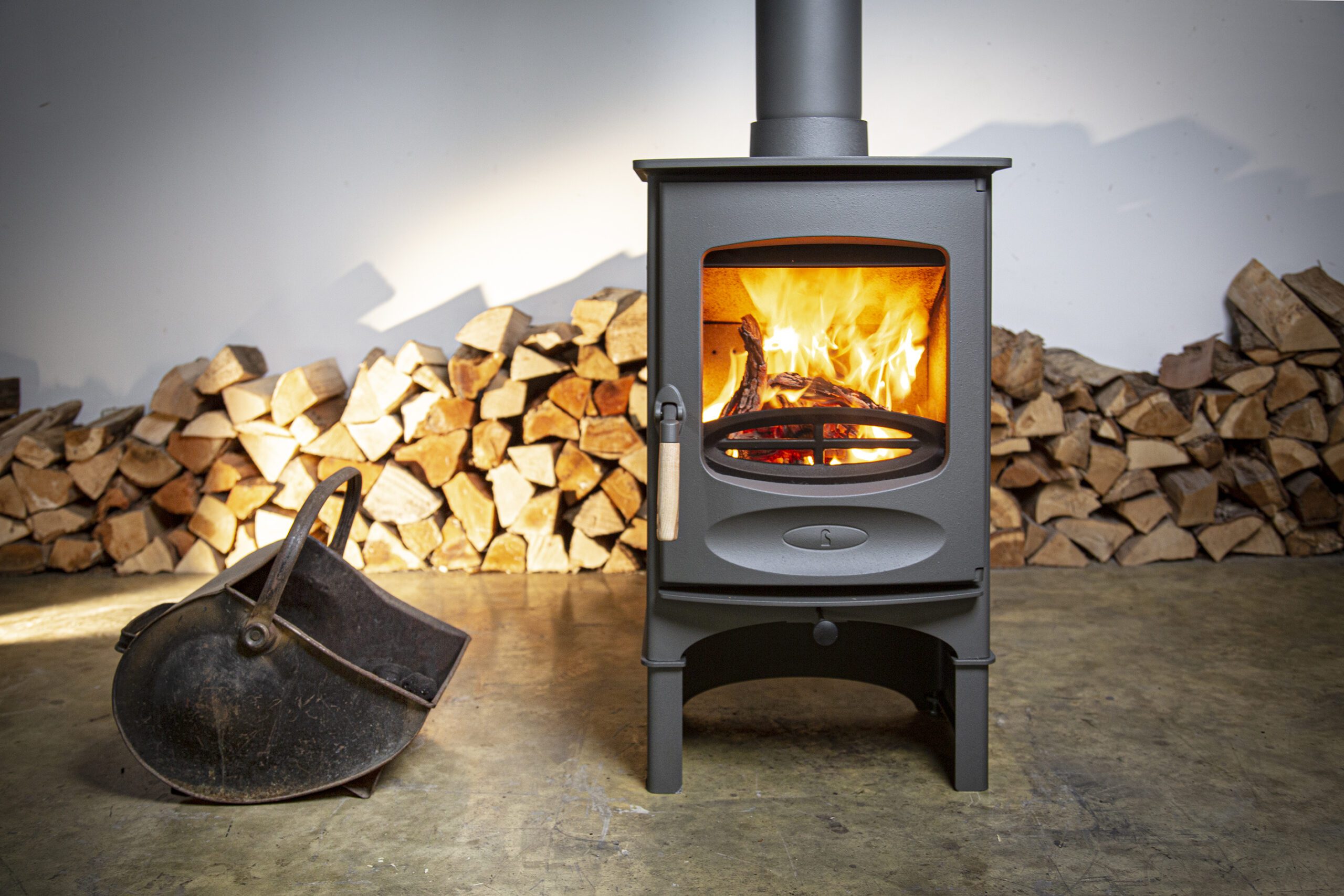As energy bills continue to soar and households across the UK are preparing to manoeuvre what is set to be another challenging winter, many of us are looking for alternative solutions to heat our homes.
If you’re considering opting for a wood-burning stove and are wondering whether or not it is eco-friendly, you’ve landed in the right place. We’ve created a helpful guide outlining everything you need to know.
What is a wood-burning stove?
A wood-burning stove is a self-contained heating appliance designed to produce indoor heat through the process of wood combustion.
More and more households are opting for wood burning stoves to heat their home as it gives them fuel independence from the larger utility companies.
Modern wood-burning stoves or log burners are considered to be more efficient and cheaper to run than traditional gas and electric heaters, making them a great choice for those looking to stay warm and cut costs at the same time.
How does a wood-burning stove work?
Wood burning stoves provide a controlled heating solution that burns wood safely, whilst heating a space at the same time. For those looking for affordable wood burning stoves, the market offers various options that balance cost with quality. In the UK, wood burning stoves are popular for their efficiency and aesthetic appeal.
There are no electrical components in a wood stove; instead, they are powered by manual input – in other words, the wood or fuel that is set alight. Here’s a brief overview of how a wood burning stove operates:
• Wood is placed inside the stove’s firebox, which is surrounded by fireproof walls.
• The wood burning stove’s air vents control the amount of airflow to the firebox, which allows the wood to burn efficiently and slowly.
• The stove’s metal enclosure radiates heat which ensures spaces of all shapes and sizes remain warm and toasty.
For those with limited space, small wood burning stoves offer a compact yet effective solution to keep your home cosy.
Explore more on how to use a wood-burning stove.
Is burning wood bad for the environment?
This is a question that continues to crop up and there have been some very misleading articles and campaigns in recent years that suggest bu. The answer depends on how it is burnt and the source of the wood being burned. If wood is properly seasoned and burnt on an modern, Ecodesign wood burning stove then the impact on the environment is minimal. You can read more here.
Are wood-burning stoves environmentally friendly?
Wood burning stoves are considered to be one of the most environmentally friendly ways of heating your home, especially when it comes to reducing your carbon footprint.
Benefits of a wood-burning stove
Wood burning stoves offer a number of benefits, including the following:
• Stylish – wood burning stoves are aesthetically pleasing and bring a sense of well being
• Flexible placement – they can be installed in various locations around the home
• Economical – a wood burning stove can be cheaper to run than other types of heating, reducing utility bills
• Environmentally friendly – less damaging to the environment than other types of heating
• Provides reliable heating, even during power outages.
How much wood does a wood burner use?
This depends on a number of factors, however generally speaking, if you use your wood burner a few evenings a week over the winter, you will need 3-4 cubic metres of wood.
What wood is best for a wood-burning stove?
The best type of wood to use with a wood burning stove is hardwood, such as Beech, Elm, Birch, and Oak. For those considering affordable wood burning stoves in the UK, selecting the right wood is crucial for maximising efficiency.
When choosing hardwood for your wood burning stove, including small wood burning stoves, you should keep in mind that the heavier the wood, the greater the heat output. This also means that the wood will burn for longer, limiting the number of times you will need to refill.
Find out more about our approved wood-burning stove fuel.
How to make a wood-burning stove more efficient?
There are a number of different ways that you can optimise the efficiency of your wood burning stove, including:
• Ensuring you light the fire correctly
• Always use the correct amount of fuel
• Always use the best type of wood – remember hardwood is the best and it should have a moisture content of less than 20%
• Maintaining an efficient temperature and always controlly airflows
• Circulating the heat from your wood stove
• Have your chimney and flue swept regularly (twice a year)
• Maintaining your stove
What to look for in an environmentally friendly log burner
When looking for an environmentally friendly log burner, you should look for a ClearSkies rated stove
Why choose us?
Founded in 1972, we are a privately owned, family-controlled, British company that specialises in the design and manufacture of high-quality wood burning and multifuel stoves. We are committed to providing the highest quality stoves, at the best possible price.
Here at Charnwood, our team operate a policy of caring for the environment in all aspects of the business; from the products we design, to the way we package them, to the way we transport them, to the way we deal with the disposal of waste products, to the vehicles we use to our choice of raw materials.
Get in touch now
If you have any questions about our wood burning stoves, please do not hesitate to get in touch with a member of our team today.

